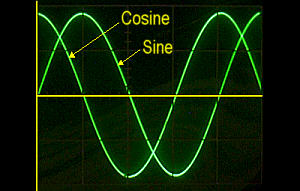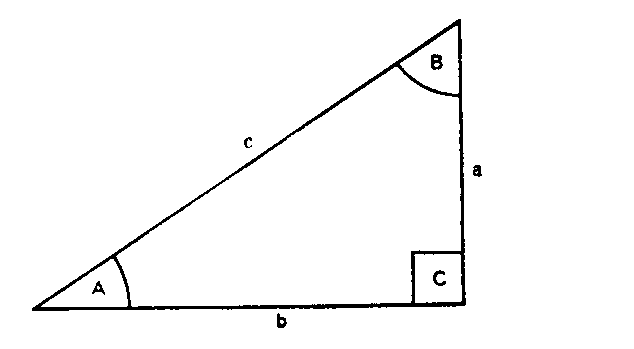Application

There are 2 important and useful rules. One is known as Sine rule and the other is known as Cosine rule.
Here they are:
For a given triangle below:

Sine rule:

Cosine rule:

Note that the angles are directly opposite to the sides. For example sin A and side a are directly opposite.
Here are the proofs - these should help you understand things a little more!
Consider a vertical line that is perpendicular from point B to D.
Let the length of the line be height (h) and;
Let the distance from A to D be x and hence DC is b-x

Sine rule:
from the diagram above
sin A = h / c
thus h = c.sin A
and
sin C = h / a
thus h = a.sin C
then since both relationships are equal to h we can say
c.sin A = a.sin C
therefore
sin A / a = sin C / c
Cosine rule:
Then, using Pythagorean Theorem:
(b-x)2 + h2 = a2
and x2 + h2 = c2 --> h2 = c2 - x2
then, sub h2 = c2 - x2 into the first equation we get
(b-x)2 + c2 - x2 = a2
expanding the bracket gives
b2 - 2bx + x2 + c2 - x2 = a2
x2 cancels out and we are left with
b2 - 2bx + c2 = a2
Now from the diagram,
cos A = x / c
then x = c cos A
now substitute this into b2 -2bx + c2 = a2 gives
a2 = b2 - 2bc.cosA + c2
rearranging gives
a2 = b2 + c2 -2bc.cosA
This is the cosine rule!

